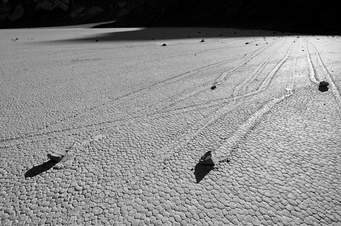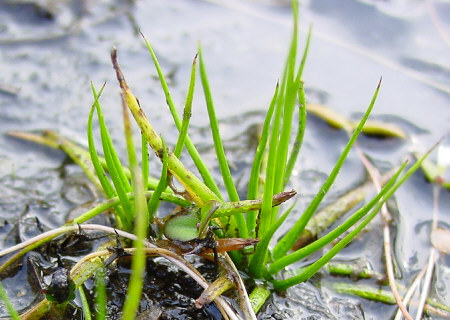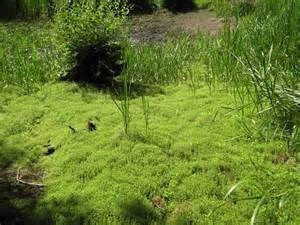Vernal pools are called this because they are often, though not necessarily, at their deepest in the spring ("vernal" meaning of, relating to, or occurring in the spring).
These pools go by many names, depending upon the part of the world in which they occur.
Vernal pools may form in forests, but they are more typically associated with grasslands and rocky plains or basins as is the case at this GZ.
While many vernal pools are only a few meters in width, playas ( the flat-floored bottom of an undrained desert basin that becomes at times a shallow lake) and prairie potholes are usually much larger, but still are otherwise similar in many respects. They have high water in wet periods, followed by dry conditions. Some exclude desert playas from the definition of vernal pools because their larger closed drainage basins in areas with high evaporation rates produce higher concentrations of dissolved minerals, with salinity and alkalinity favoring different species. Which is NOT the case here.
. 
 PLAYA
PLAYA
Despite being dry at times, vernal pools teem with life when filled. The most obvious inhabitants are various species of breeding frogs and toads. Some salamanders also utilize vernal pools for reproduction, but the adults may visit the pool only briefly.
Though they are temporary pools of water that provide habitat for distinctive plants and animals. They are considered to be a distinctive type of wetland usually devoid of fish, and thus allow the safe development of natal amphibian and insect species unable to withstand competition or predation by fish.
During most years, a vernal pool basin will experience inundation from local surface runoff, followed by desiccation from evapotranspiration. These conditions are commonly associated with desert climate.
Most pools are dry for at least part of the year, and fill with the winter rains or snow melt. Some pools may remain at least partially filled with water over the course of a year or more, but all vernal pools dry up periodically.
A key time during vernal pool development between the flooding and evaporation phases is the flowering of native species, which attracts pollinators and seed distribution patterns.
In these vernal pools, flowering occurs simultaneously because of the seasonality of favorable conditions. Vernal pool ecosystems may include both cosmopolitan species and endemic species adapted to unique environmental conditions. These include moisture gradients, salinity gradients, and reduced levels of competition. Mircrotopographical gradients also contribute to species distribution in vernal pool communities, where plants that flower sooner in the season are more likely to be found at slightly higher elevations than later flowering species. Many vernal pool plants have buried seeds which accumulate in the soil. Different species are suited to different moisture levels, and as water evaporates from the edges of a pool, distinctive zonation of species can be seen.
Many upland perennial plants are unable to withstand the duration of vernal pool inundation; while many wetland plants are unable to withstand desiccation. Wetland plants may also be nutrient limited within small drainage basins. When dissolved carbon dioxide is depleted by daytime photosynthesis, vernal pool species collect carbon dioxide nocturnally using Crassulacean acid metabolism.
Vernal pool basin habitats favor annual plants with some uniquely adapted perennials which suffer extensive mortality resembling annual reproduction.
One such is the quillwort as seen in this picture. 
Another is the pygmyweed as in this picture 
To log this EC as a find please email me the answers to these questions:
1) Vernal Ponds are given this name for what reason?
2)What type of area is this Vernal Pond located?
3) What is the difference between this pond and a Playa
4) Do you see any plant or animal life? If so, describe what you see?
5) You can actually walk the length of this pond, from the road to the back of it. Walking this distance off, how long is this pond and in your best guess how wide is it.